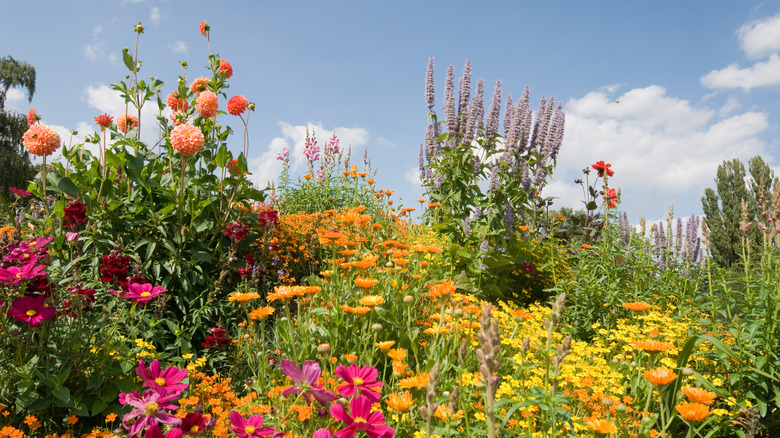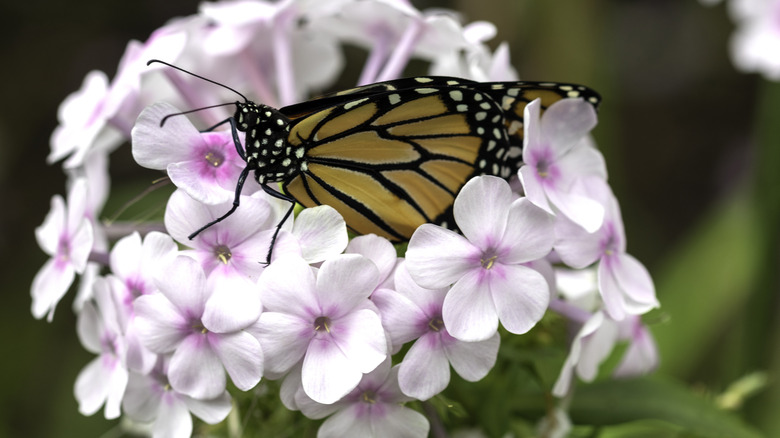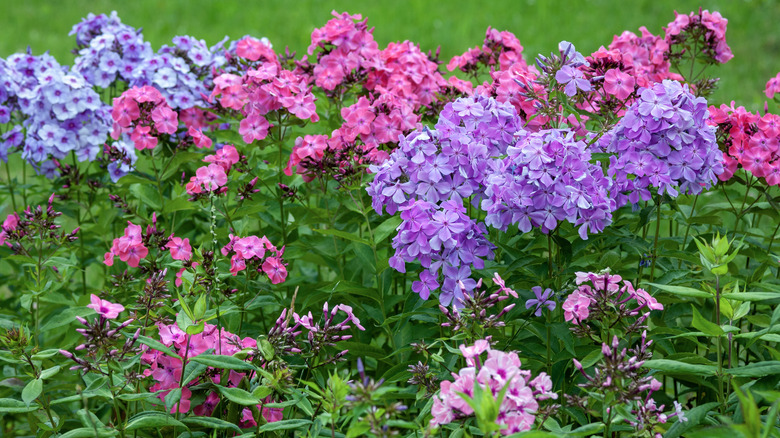This Cottage Garden Perennial Favorite Is A Powerhouse In Late Summer Gardens
Watching the last of the summer blooms fade as fall sets in can be bittersweet. Knowing that plants will be going dormant soon makes us appreciate the last flowers even more. There are lots of ways to make the most of your autumn garden. Stretch the season as much as you can with plants that flower well into the fall. Phlox paniculata, also aptly called fall phlox, is a plant that will deliver late-season color to your garden.
Stretching to heights of up to 6 feet and sporting cones of pink or lavender blossoms, fall phlox is a dramatic addition to your yard. It is able to grow in USDA zones 1 to 9 and is hardy in zones 4 and up. Capable of blooming from June until October, this tough perennial provides major returns on your time and money investment after planting.
Fall phlox is not invincible, though. To reap the rewards of this showy flower, you need to follow some specific care requirements. But with the right attention, fall phlox will delight for many long seasons.
The benefits of growing fall phlox
If you live in the right regions, growing perennials is rarely a bad idea. Plant them once and enjoy them for years. Perennial fall phlox returns reliably year after year. Fall phlox is considered easy to grow and tolerates most types of soil. Once the plant is established, it doesn't need much water and is considered drought-tolerant. If you lack ground space for planting, fall phlox grows well in containers for a deck or patio garden. With flowers ranging from white to blue to vibrant pink and more, planting a mix of colors of fall phlox is a surefire way to add lots of visual interest to your flower beds until your first frost.
You'll bring more pollinators to your yard and garden when fall phlox is in bloom. Its tubular, fragrant flowers are irresistible to butterflies, hummingbirds, bees, and other pollinators. Deer and rabbits aren't tempted by fall phlox, but its alluring scent is sure to please humans.
How to make your fall phlox flourish
Phlox paniculata is considered easy to grow and tolerates most types of soil. But, if you want to enjoy this flower for as long as possible, it's worth the time to set it up for success. It's considered a low-maintenance plant once it's established, but it has a few pests and diseases to watch out for. Smart planting strategies lower the chances of your phlox suffering from mildew, pests, or rot.
Fall phlox loves sun and can take partial shade as well, but phlox planted in the shade is more susceptible to powdery mildew. Your best bet is to choose a spot that gets six or more hours of sun per day. Space the plants about 18 inches apart when you plant them for better air circulation and to prevent powdery mildew. While fall phlox isn't too picky about its soil, it can suffer from root rot if its soil stays too wet. Opt for an area with well-drained, moist soil for strong roots. Unless you live in a particularly windy or high-traffic area, you probably don't need to stake your fall phlox.
Despite its tolerance to drought, fall phlox can be invaded by spider mites in hot, dry climates. While you can't control the weather, you can use trusted methods to get rid of spider mites.


